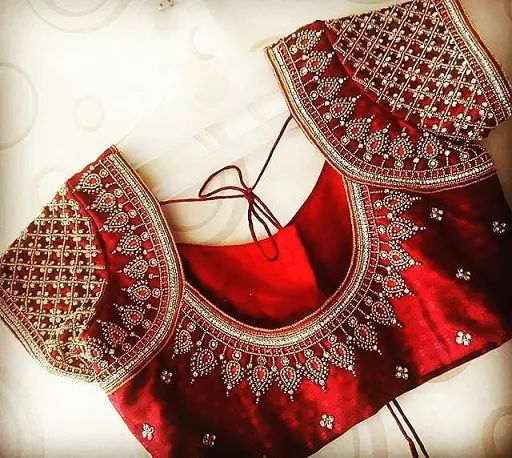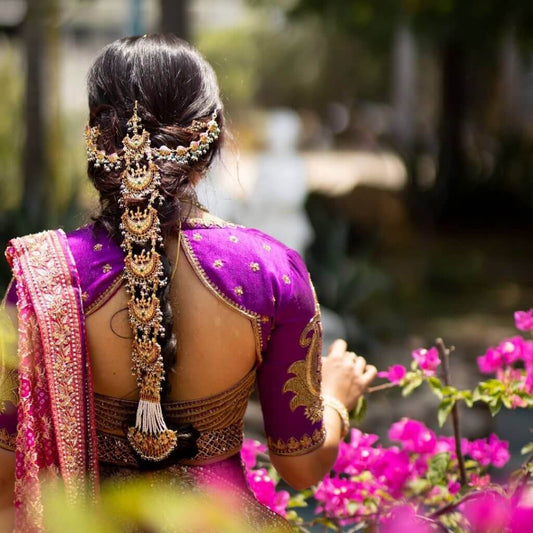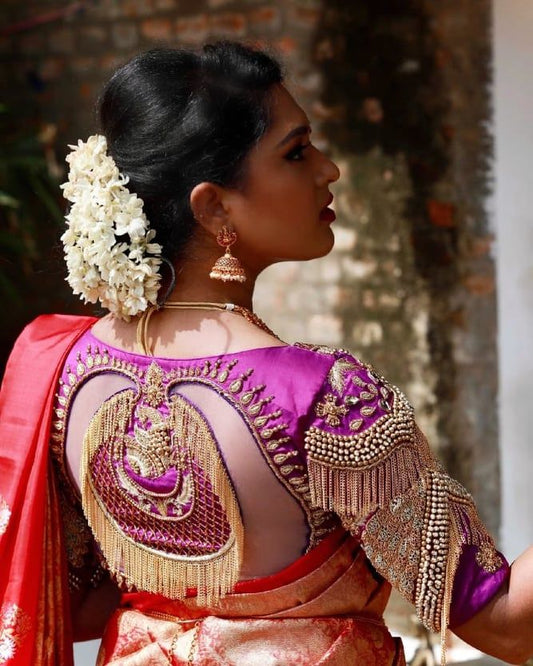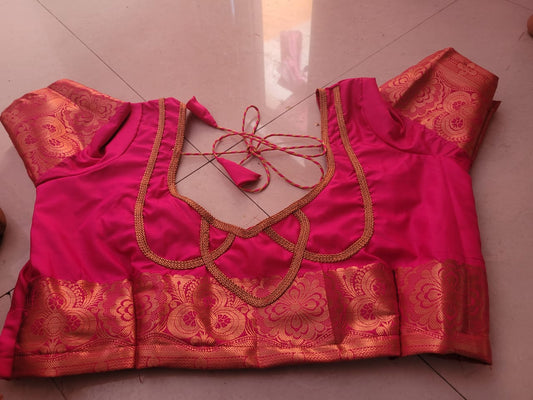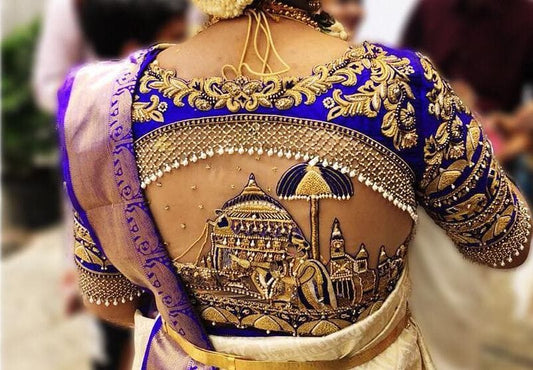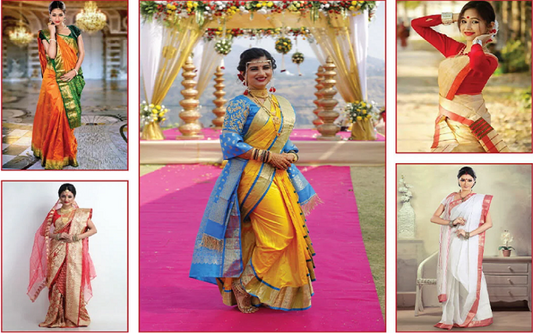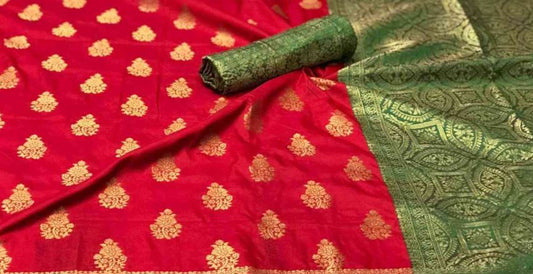Everything goes through a change. It is especially true in the fashion industry. However, if there is one constant, that’s our traditional Indian saree. It has always been a part of a woman’s beauty. India is home to various traditional saree draping styles that even gained popularity among the international fashion scene.
This blog will share some of how you can drape your Kanchipuram sarees. These styles showcase the splendor of specific regions. It speaks about the culture and heritage of the state. Here are some saree wearing styles you must try.
1 - Nauvari Saree
Nauvari Sarees are an integral part of Maharashtrian culture. Nauvari translates to nine-yard saree. This saree is best seen during Lavani, the folk dance of Maharashtra. One end of the saree goes front to back under the legs, later tucked in the waist. The upper part of the saree is draped like a regular saree. This saree is worn pretty much in the same way as a dhoti. It allows for fluid leg movements and also makes the woman appear elegant.
2 - Atpoure Shari
The Atpoure Shari is a Bengalis most loved saree. It usually comes in white with a red border. The box pleats are draped on the front while the Pallu rests on each shoulder. The Pallu is taken from the back of the left shoulder and again from the back to the right shoulder.
3 - Seedha Pallu
Seedha Pallu is very popular in Gujarat, Odisha, and Uttar Pradesh. It is an everyday attire for the women of these states. Like in a lehenga choli, this draping style uses the veil instead of a dupatta. Generally, this style is preferred for freehand movements. Also, if the woman wants to wear some heavy saree, seedha pallu is the go-to choice. The wearer does not have to tolerate the weight of rich embroidery. Also, this style best displays the designs found in the border and the veil.
4 - Pinkosu
Pinkosu is one of the traditional saree draping styles of Tamil Nadu. The word translates to ‘pleats at the back’. Therefore, the woman wraps the saree one and a half times around the waist. Unlike the typical saree, the pleats come from inside the waist and fall on the outside of the wrap. Usually, handloom sarees are best suited for this style.
5 - Madisaru
This style is mainly used while wearing bridal sarees. It is an integral part of Iyer and Iyengar culture. Madisaru is popular during special occasions or the festival season. It is the most complicated among saree drape styles. The lower part of the saree is worn like a Dhoti, while the other is draped like a typical saree. There is no need for a petticoat or blouse for this draping style.
There are different types of saree draping across many regions. Each style captures its culture and tradition at its essence. You can also try any of these sari styles and enhance the look of your attire.
If you are looking to add new collections to your wardrobe, Lakshaya Silk Sarees is where you will find wedding silk sarees below 10000 with excellent craftsmanship!



